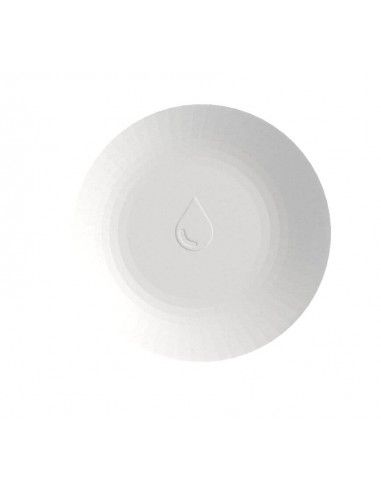When the electrolytic capacitors are polarize the voltage or potential on the positive terminal is greater that of the negative one, allowing charge to flow freely throughout the capacitor. There are various capacitors, some of them are ‘polarized’ and some are classified under the category of ‘non-polarized’. Both types possess ‘two terminals’.
The difference between these two types of capacitors is very simple. They are classified into two types, one is a polarised capacitor (the capacitor which is specified with its polarity) and another non-polarised capacitor (capacitor whose polarity is not specified).
If the capacitance of a capacitor has fixed polarity, it is connected based on circuit polarity direction. However, due to the chemical nature of the film and construction used for electrolytic capacitors, there is a polarity of installation and use. Capacitor polarity Capacitor Labeling.
Also, the negative lead for leaded wet e-caps is usually shorter. Great care must be taken to ensure the polarity markings are observed when inserting these capacitors into circuits otherwise damage to the component, and more importantly to the remainder of the circuit board can result. Meaning they have a positive and negative pin. The pin which is long is the positive pin and the pin which is short is the negative pin.
You can also identify the polarity using the negative strip on the capacitor label.
As shown in the picture above the negative pin will be directly under the negative symbol. Se hela listan på components101. This charge (Q) will be a product of the value of capacitance (C) and the voltage (V) applied to it. The value of the capacitance and Voltage of a capacitor will be mentioned on its label. Also the voltage appearing across the capacitor terminals should always be less than the rated capacitor voltage (V).
In most of the circuits the value of the capacitance need not be exactly the same value specified in the circuit. A higher value of capacitance will generally not affect the performance of the circuit. However, the value of voltage should be the same or higher than the specified value to prevent the risk mentioned in precaution above.
In that case, if you do not have the exact value you can use to capacitors in series or parallel to attain the desired value. When two capacitors are connected in seriesthen, the value of the capacitance(C) gets inversely added up and the rated voltage (V) is directly added up in series as shown in the picture below. For the single transistor and LM3circuits, this is lower than a typical mic cartridge bias of 2-V, and the capacitor orientation reflects this. V, higher than the mic bias point, and the capacitor orientation reflects this. General-purpose capacitors are low-cost moderate stability and moderate tolerance.
All types of it have two-conductor (two conducting plates) and the dielectric between them, the dielectric can be different in a different type of capacitor. The polarity of electrolytic capacitors is marked on the body with an arrow with an embedded - sign pointing to the base. The lead closest to the arrow is the negative pin for the cap.

As shown on the electrolytic cap immediately to the right of the removed part location, the thickened part of the outline is where the negative lead of the cap goes. The polarity of an electrolytic capacitor is marked on the capacitor body – the negative lead of the capacitor is marked. The old one has a black screw on one terminal and a gold one on the other (though the black screw is where the capacitor appeared to leak so it could just be black from what ever leaked out). Electrolytic capacitors are mostly in the micro-Farad range, e. A 1uF capacitor will give a bass rolloff of 15Hz, 470nF will be plenty good enough for most applications, so a film capacitor is a good choice.
The downside to using tantalum capacitors is their unfavorable failure mode which may lead to thermal runaway, fires and small explosions, but this can be prevented through the use of external failsafe devices such as current limiters or thermal fuses. Polarity marking of tantalum electrolytic capacitors All tantalum capacitors are polarized components, with distinctly marked positive or negative terminals. When subjected to reversed polarity (even briefly), the capacitor depolarizes and the dielectric oxide layer breaks down, which can cause it to fail even when later operated with correct polarity. The positive terminal should be connected to positive of supply and negative to negative. Most capacitors can be non polarized up to about microfarad.
Small capacitors like 0. So can be connected either way around. There are very many different materials used to make capacitors including paper, plastics, air and tantalum. Please post a picture. If it charges up normally, as expecte then the polarity is correct. I need this in order to print the correct polarity on a schematic.
I am assuming the PCB portion of the software will put down a polarized footprint as selected. How do you folks denote polarity on capacitors on your designs. These markings indicate the lead that is attached to the outer foil of the capacitor (they do not indicate polarity ). In some applications, such as RF circuits, the outer foil can be used as shielding.
In general, you can replace these capacitors with ordinary non-electrolytics and it does not matter which way you install the new capacitor.


Inga kommentarer:
Skicka en kommentar
Obs! Endast bloggmedlemmar kan kommentera.